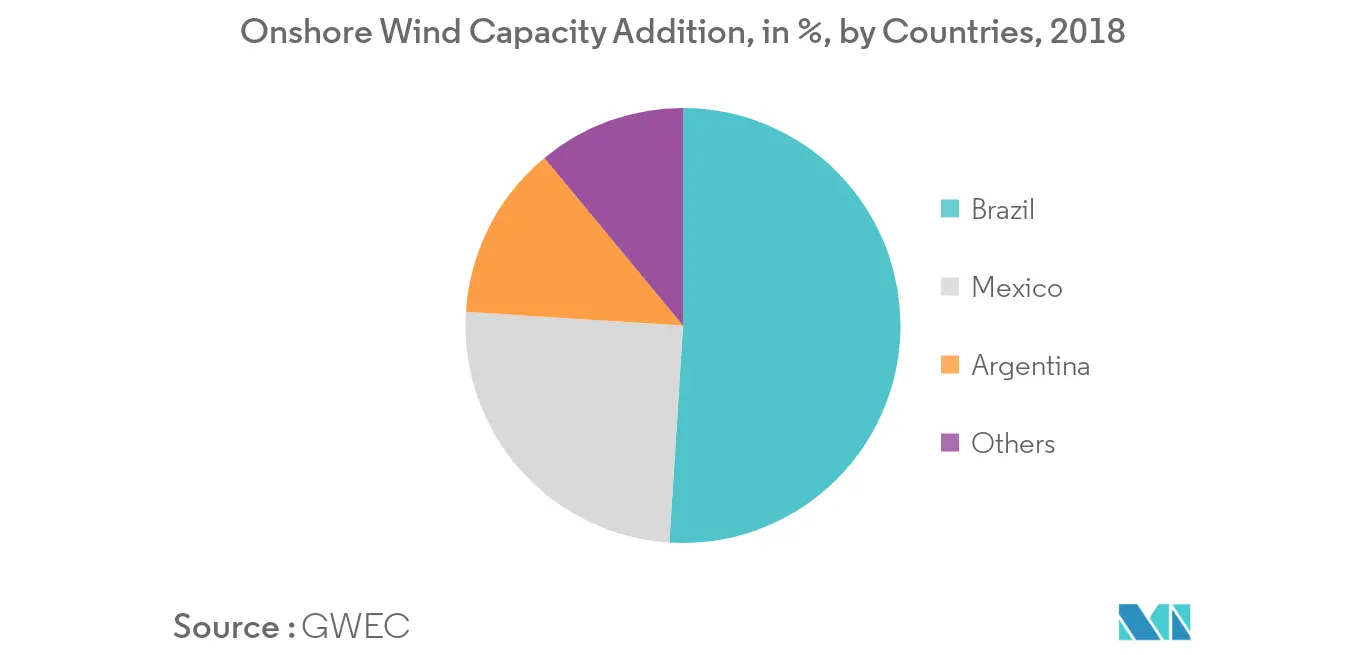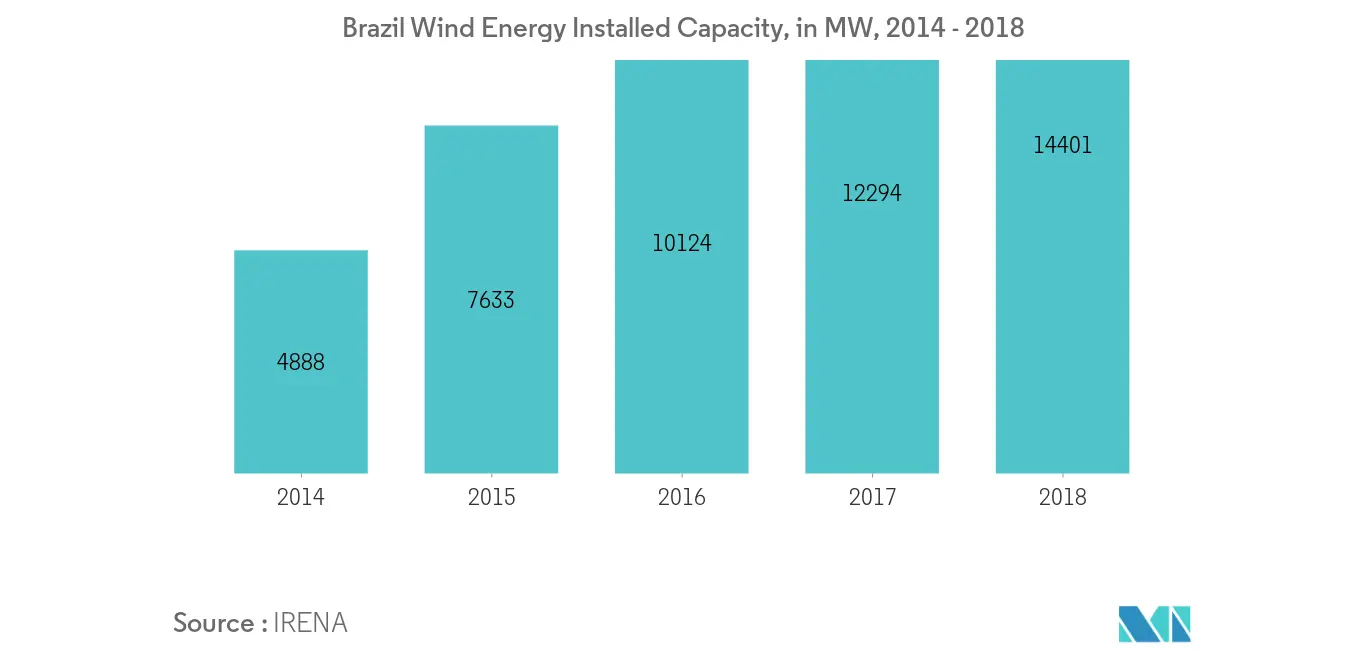Market Trends of Latin America Wind Turbine Industry
This section covers the major market trends shaping the Latin America Wind Turbine Market according to our research experts:
Onshore Wind Turbine Dominating the Market
- Onshore wind energy power generation technology has evolved over the last five years to maximize electricity produced per megawatt capacity installed to cover more sites with lower wind speeds. Besides this, in recent years, wind turbines have become larger with taller hub heights, broader diameters, and larger wind turbine blades.
- As of 2018, the region has cumulative wind energy installed capacity of around 23 gigawatts, which was primarily from the onshore wind turbines. As of 2018, the region has no offshore wind turbine installation but is expected to have by 2022, with few under-construction offshore projects in Brazil.
- During 2018, the region has added nearly 3.7 gigawatts of onshore wind capacity, of which 51% was added by Brazil, 25% by Mexico, and 13% by Argentina.
- With the ongoing demand for an affordable and cleaner form of electricity in the region, Brazil is implementing few onshore wind turbine projects, that includes the 565.5 megawatts Paraiba wind farm complex in Santa Luzia. It is expected to be the biggest onshore wind project in entire Latin America. The project includes 18 wind farms, of which three are already operating, and fifteen are under construction. Construction of the new farms is expected to get completed by January 2023.
- Apart from Brazil, Chile is planning to increase its onshore wind energy capacity. Horizonte project in Chile is another prominent project in the region, which is expected to have a potential of around 980 megawatts and is expected to generate 2000 gigawatts hour (GWh) of electricity in the near future.
- Argentina, Peru, and Columbia are a few other potential wind energy countries in the region. Proper grid connections, policy framework, and investment in these countries are expected to boost the wind energy market in the countries and in the region.

Brazil Likely to Dominate the Market
- Brazil is the dominating country in the region that has the highest installed capacity. As of December 2018, the country had a total installed wind capacity of 14,707 MW, added approximately 1,939 MW of wind power capacity in 2018. And, out of 14,707 MW, 98% are in operation and rest 2% are in the testing phase.
- About 75 new wind farms were built in 2018, totaling 1.94 MW, in the states of Bahia, Rio Grande do Norte, Piauí, Ceará, and Maranhão. With the additional 1.94 GW, wind power accounts for 9% of the nation's power matrix. By the end of 2018, there were a total of 583 wind power plants in Brazil.
- In 2017, wind-generated electricity accounted for 7.44% of the country's total electricity consumption. This share increased to 9%, by the end of 2018. In 2017, wind power supplied more than 60% of the electricity demand in the Northeastern region. In 2018, wind energy was the third-largest source of the electricity matrix, with around 9% of participation.
- As per the Brazilian Wind Energy Association (Abeeólica), the country is expected to have nearly 18.8 GW of installed wind capacity by 2024, considering 186 new wind farms that are scheduled to come online by the mentioned year. In addition to this, the government's ten-year energy development plan forecast the country to reach 28.5 GW of wind capacity, by 2026. Thus, commissioning of these projects is expected to help Brazil to dominate the market in the near future.

